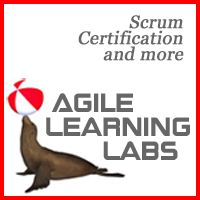Also: User Persona
A fictional character with individual needs, goals and habits, created by an Agile team as a representative user, to serve as a reference-point for usability during product development. Agile teams may refer back to a set of personas (the convention is to use the English plural rather than the latin personae) as they develop a product, to test whether or not the product meets these users’ needs and desires.
Etymology
The concept of using actual characters to represent “typical users” dates back to advertising giant Ogilvy, which included the concept in their “knowledge management system” in 1997. Agilist Alan Cooper took the concept one step further in his 1999 book The Inmates Are Running the Asylum: Why High Tech Products Drive Us Crazy and How to Restore the Sanity suggesting that the idea of “typical” needed to be dropped, and teams should design a product for an individual persona.
References
The Inmates Are Running the Asylum: Why High Tech Products Drive Us Crazy and How to Restore the Sanity by Alan Cooper
Personas, Profiles, Actors, & Roles: Modeling users to target successful product design an interactive presentation by Jeff Patton

